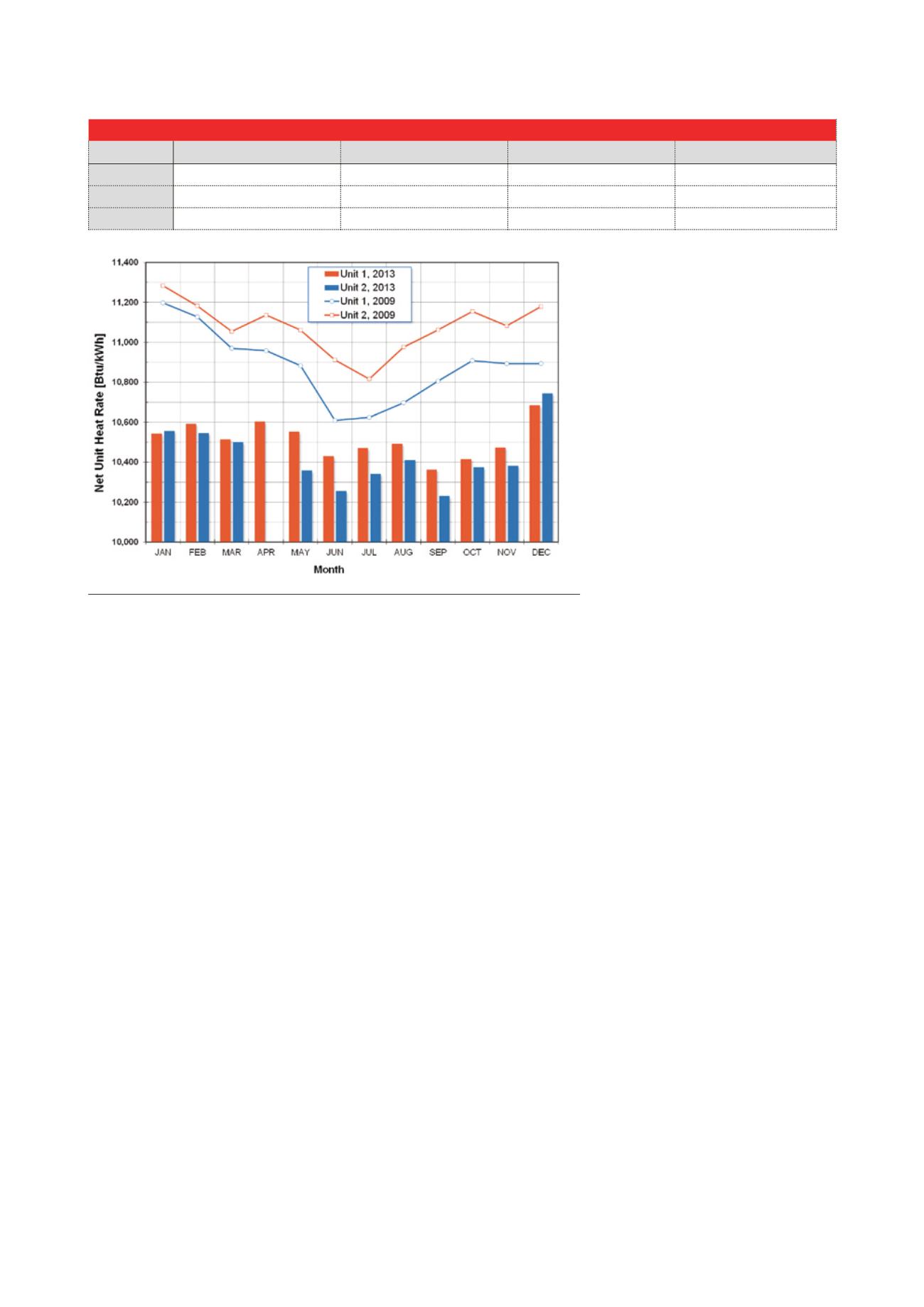
parameters affecting the residual
moisture content.
DryFining applications
DryFining may be retrofitted to the
existing PCC plants, integrated into
the new-build PCC plants, as well as
coal gasification (IGCC and
coal‑to‑liquids) and lignite-fired
oxyfuel power plants employing
dry-feed oxygen-blown gasifiers.
For existing units, depending on
site specifics, DryFining is capable of
reducing coal moisture content by
10 – 20%-points, with higher value
corresponding to the supercritical
units. Higher moisture reductions are
possible for newly built units, where
DryFining is integrated with a power
plant and a boiler is designed to burn
dried coal.
Thermal integration of DryFining
with an existing power plant is
site-specific and depends on the
available heat sources, space
constraints and general layout of the
plant. The benefits of coal drying,
such as heat rate improvement,
increase as the moisture content of
the raw coal decreases. For
North American lignites containing
approximately 40% moisture, the
heat rate improvement is in the
3 – 5% range,
2
while for the
sub‑bituminous coals with lower
moisture content (15 – 30%), the heat
rate improvement is in the 2 – 3%
range.
Integration of DryFining into
newly built power plants operating
with high steam parameters is
especially beneficial for units
burning low-rank coals, since their
efficiency is severely affected by the
high coal moisture content. A
reduction of coal moisture is
necessary to achieve the full benefits
of the advanced PCC technologies.
The achievable reduction in coal
moisture content may be limited by
thermal performance of the boiler
convection pass, the amount of
available heat or by the equilibrium
moisture content of coal.
3
A new plant
with integrated DryFining will
require lower initial CAPEX
compared to the plant burning raw
coal (including the front-end coal
drying system) and will not be limited
by the convection pass performance.
Five years at Coal Creek
Performance and
emissions
The coal-drying and -cleaning system
is sized for 1100 tph of raw
North Dakota lignite with moisture
content in the 40% range. DryFining
has been in continuous commercial
operation at the Coal Creek power
plant since December 2009.
Controlled performance and
emissions tests were conducted on
Coal Creek Unit 1 at full load and
steady state conditions before (2009)
and after (2010 and 2011) the
implementation of DryFining, in
order to quantify and document the
improvement in unit performance
and emissions. With drier coal, HHV
was approximately 11% higher,
while coal and flue gas flows were
9.5% and 5.8% lower, respectively.
The improvement in net unit heat
rate was 3.5%, while boiler
efficiency increased by 3.4%. The
improvement in net unit heat rate is
higher than the improvement in
boiler efficiency because, with drier
coal, the station auxiliary power
used is lower, compared to the wet
coal. Also, mill and ID fan power
were reduced by 9.9% and 17.3%,
respectively.
The net unit heat rate was also
calculated by the plant performance
monitoring system. The monthly
average values, corresponding to the
wet coal operation (2009) and
operation with dried coal (2013),
presented in Figure 2, show the
average annual improvement of 3.4%
for Unit 1 (virtually the same as
determined during controlled tests).
The heat rate improvement for Unit 2
of 5.8% is higher because it also
includes the effect of a steam turbine
upgrade. The reduction in CO
2
emissions is proportional to
improvement in net unit heat rate.
Figure 2. Monthly average net unit heat rate for refined (2013) and wet (2009) coals.
Table 1. Effect of DryFining on emissions at Coal Creek Unit 1: performance tests
Test
NO
X
(lb/million Btu)
SO
2
(lb/million Btu)
Hg
T
(
µ
g/Nm
3
)
CO
2
intensity (lb/MWh-net)
Wet coal
0.284
0.578
14
2209
Dried coal
0.200
0.346
8.5 – 9
2144
Reduction (%)
30
>40
35 – 40
3.0
68
|
World Coal
|
July 2015


